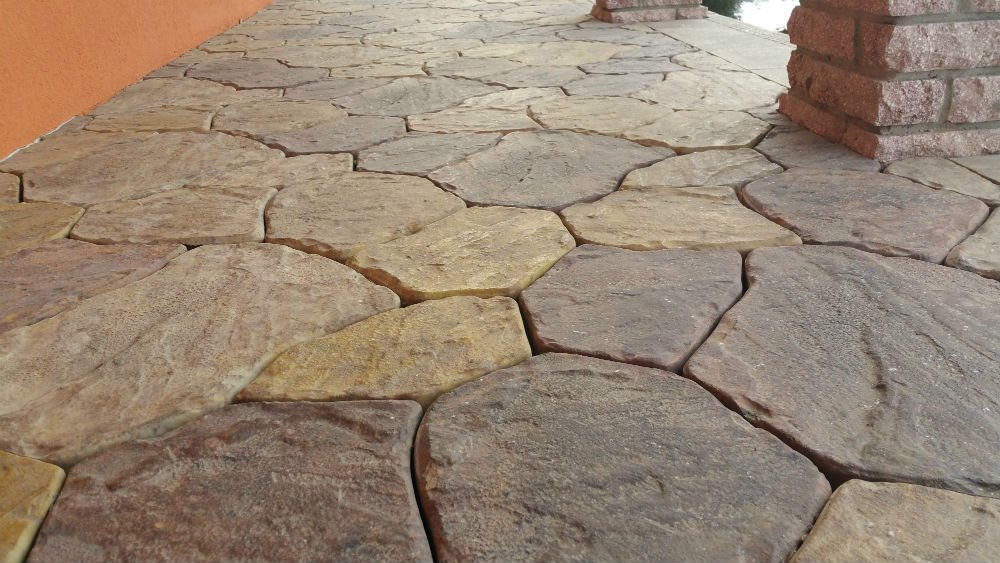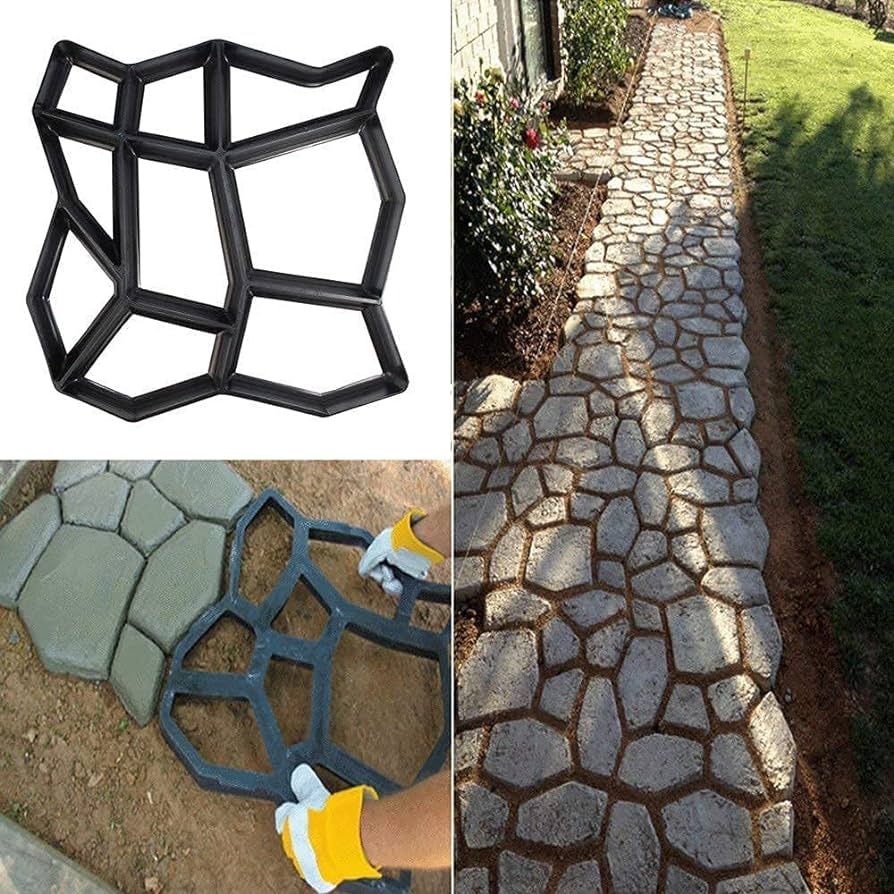
DIY Concrete Paving Molds

I. Introduction
A. Embracing the Beauty of DIY: The Allure of Concrete Paving Molds
Transforming your outdoor spaces with customized walkways, patios, and driveways has never been easier or more affordable, thanks to the versatility and cost-effectiveness of concrete paving molds. These ingenious tools empower DIY enthusiasts to unleash their creativity and craft unique designs that perfectly complement their homes’ exteriors. Whether you envision intricate patterns, geometric shapes, or classic brickwork, the possibilities are endless with concrete paving molds.
B. Unveiling the Benefits: Why Choose Concrete Paving Molds
The allure of concrete paving molds extends far beyond their aesthetic appeal. These molds offer a multitude of advantages that make them an attractive choice for homeowners seeking to enhance their outdoor spaces:
-
Affordability: Concrete paving molds are significantly more cost-effective than traditional paving materials like bricks or stones, allowing you to achieve a high-end look without breaking the bank.
-
Versatility: With a vast array of mold shapes, sizes, and textures available, you can tailor your concrete creations to match any style or preference, from rustic charm to modern elegance.
-
Durability: Concrete is renowned for its strength and resilience, ensuring that your paved surfaces can withstand heavy foot traffic and harsh weather conditions for years to come.
-
Easy Installation: The DIY nature of concrete paving molds makes them simple to install, even for those with limited experience in home improvement projects.

II. Gathering the Essentials: Preparing for Your Concrete Paving Project
Before embarking on your concrete paving adventure, it’s crucial to gather the necessary materials and tools to ensure a smooth and successful project.
A. Selecting the Right Molds: Choosing the Perfect Design for Your Space
The first step in your concrete paving journey is selecting the molds that will bring your vision to life. Consider the overall style and aesthetic of your outdoor space when making your choice. Do you prefer the clean lines of geometric shapes, the natural charm of stone-inspired patterns, or the timeless elegance of classic brickwork? Once you’ve determined the desired style, explore the wide variety of mold options available at home improvement stores and online retailers.
B. Acquiring the Necessary Materials: Ensuring You Have Everything You Need
To ensure a seamless concrete paving project, assemble the essential materials before you begin:
-
Concrete Mix: Choose a high-quality concrete mix suitable for outdoor use and the desired thickness of your paving stones.
-
Mold Release Agent: Apply a mold release agent to prevent the concrete from sticking to the molds and ensure easy removal.
-
Mixing Tools: A shovel, bucket, and mixing stick or drill with a mixing paddle are essential for preparing the concrete mixture.
-
Safety Gear: Wear gloves, safety glasses, and a dust mask to protect yourself during the concrete mixing and pouring process.

III. The Art of Concrete Paving: Step-by-Step Instructions
With your materials and tools in hand, it’s time to transform your outdoor space with your DIY concrete creations:
A. Preparing the Site: Creating a Smooth and Level Foundation
-
Clear the Area: Remove any debris, vegetation, or uneven surfaces from the paving area.
-
Excavate the Site: Excavate the site to the desired depth, ensuring a level and compacted base.
-
Install Edging Materials: Install edging materials around the perimeter of the paving area to contain the concrete and create a clean edge.
B. Mixing the Concrete: Achieving the Perfect Consistency
-
Follow Instructions: Carefully follow the instructions on the concrete mix packaging to determine the correct water-to-powder ratio.
-
Mixing Process: In a large mixing tub or wheelbarrow, gradually add water to the concrete powder while mixing thoroughly.
-
Desired Consistency: Aim for a consistency similar to thick pancake batter – the mixture should be pourable but not too runny.
C. Pouring and Leveling the Concrete: Creating a Uniform Surface
-
Mold Release Agent: Apply mold release agent to the inside of each mold, ensuring even coverage.
-
Mold Placement: Place the molds on the prepared site, ensuring they are level and properly spaced.
-
Concrete Pouring: Pour the concrete mixture into the molds, filling them to the desired level.
-
Leveling the Surface: Use a trowel or screed to level the concrete surface within the molds.

IV. Curing and Finishing Touches: Ensuring a Lasting and Beautiful Creation
A. Allowing the Concrete to Cure: Patience is Key to a Strong Finish
- Allow the concrete to cure for a minimum of 24 hours, or as recommended by the specific concrete mix instructions. Resist the urge to walk on or disturb the curing concrete, as this can cause cracking or damage.
B. Releasing the Molds and Finishing the Surface
-
Mold Removal: After the curing period is complete, gently remove the molds from the cured concrete. Take care to avoid damaging the edges or pattern of the concrete pieces.
-
Imperfection Correction: Examine the concrete pavers for any small imperfections or gaps in the surface. Fill these imperfections with a patching compound specifically designed for concrete to create a smooth and even finish.
-
Surface Protection: Apply a concrete sealer to the surface of your newly created pavers. This will protect them from moisture, stains, and fading, ensuring their beauty and longevity for years to come.
C. Adding Decorative Touches: Personalizing Your Paved Creation
Enhance the visual appeal of your concrete paving by incorporating decorative touches that complement your overall design. Here are a few ideas to inspire your creativity:
-
Color Pigments: For a pop of color, consider adding color pigments to the concrete mix before pouring. This can create a vibrant and eye-catching effect.
-
Staining: After the concrete has cured, you can apply concrete stain to achieve a different color or a more rustic appearance.
-
Sealer Options: Choose a concrete sealer with a glossy or matte finish, depending on the desired aesthetic for your outdoor space.
-
Decorative Inlays: Before pouring the concrete, you can embed decorative stones, pebbles, or glass pieces into the mold for a unique and personalized touch.
-
Border Accents: Create a visually distinct border around your paved area using contrasting colored concrete pavers or decorative edging materials.

V. Embracing the Satisfaction of DIY Beauty
With careful planning, preparation, and the use of concrete paving molds, you can transform your outdoor spaces into beautiful and functional areas that reflect your unique style. The process of creating your own custom concrete pavers offers not only a cost-effective alternative to traditional paving materials but also the immense satisfaction of bringing your vision to life through DIY ingenuity. So, unleash your creativity, gather the necessary tools and materials, and embark on your concrete paving adventure. With a little effort and these helpful tips, you can pave the way for a more beautiful and enjoyable outdoor space.